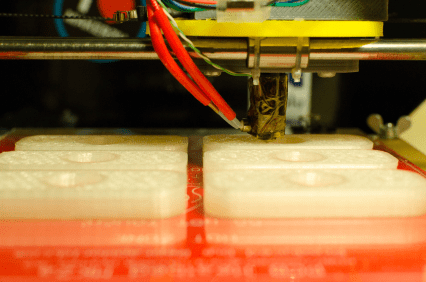
One of the emerging technologies that has had a major impact in the manufacturing sector is 3D technology. Long experimented with in the R&D departments, 3D technology is increasingly being used to produce finished parts and products in multiple industries. According to a poll conducted by Infor, 14% of respondents indicated that 3D technology is a significant part of their business and is even critical.
While 3D technology is still in its early development stages, many manufacturers have embraced the technology. This is a clear indication that most organizations have realized or see the potential benefits that 3D applications can address in their operations, for example in creating cost-effective products quickly.
Today, customers are demanding products faster, be they medical imaging equipment or automobiles. To drive revenues up and maintain market leadership, manufacturers are turning to 3D technology to speed up production. However, production is one of the most challenging and high-cost activities in manufacturing. On the minimum, companies must invest in prototyping and testing, which increase development costs. This is where 3D printing comes to the rescue.
While prototyping is the most obvious benefit of 3D printing, the technology can be used for other applications, too, ranging from the manufacturing of durable metal objects that can withstand critical high pressure situations to making biocompatible products. Another benefit is that 3D printing manufacturers who provide spare parts can have the items printed on demand rather than having them in stock. This benefit is very attractive in industries where space for inventory parts is limited, such as in the oil and gas industry.
While the benefits of 3D printing technology cannot be denied, some organizations have been slow to adopt it due to a lack of understanding the process and benefits. Other organizations cite the cost of equipment as the major barrier to adoption.
Impact of 3D Printing for ERP
How can manufacturing organizations accommodate 3D printing into their ERP systems from a business management standpoint? Here are some insights:
a) The 3D printer can be set up as a workstation within the ERP and integrated with some elements of enterprise asset management (EAM) to ensure consistent maintenance is performed on it. You can also facilitate regular quality checks of parts produced to ensure they meet industry standards and functional specifications.
b) Organizations will need to carefully maintain records of constituents that each part of a SKU is made of. 3D printing technology will reduce inventory spare parts, but the ERP system will need sufficient forecasting capability to determine the amount of product manufacturing components that need to be used over a specific period, as well as how much will be needed for use by the 3D printer.
c) 3D printing includes process manufacturing. In 3D printing, you are basically taking specific alloy materials and combining them through some type of chemical reaction or heat to come up with something new. Therefore, if you are using 3D printing software, you will have to integrate process manufacturing software into your ERP system. Even if you are a discrete manufacturer, you will be forced to become a process manufacturer.
d) Companies will have to take part serialization even more seriously as 3D manufacturing can lead to legal contests or issues with intellectual property. In the past, the easiest way for a competitor to replicate your product was by reverse engineering it. However, with 3D printing, that part or product can be replicated much faster and more easily since the need to develop jigs, fixtures, dies, tools, and other components will be eliminated. As a manufacturer, a point of concern here will be that it will be hard to ascertain whether you are buying a genuine part for industrial replacement. On the same note, companies selling equipment may have a difficult time knowing whether the products they sell to customers are genuine, thus leading to issues with warranty.
Manufacturers looking to adopt 3D printing technologies need to examine the capability of their ERP systems to adopt interaction between machines. This may require integration of specialized point solutions, such as product configuration management systems and computer-aided design (CAD) systems. Advanced supply chain management systems and performance lifecycle management systems may also need to be part of the organization’s IT infrastructure.
